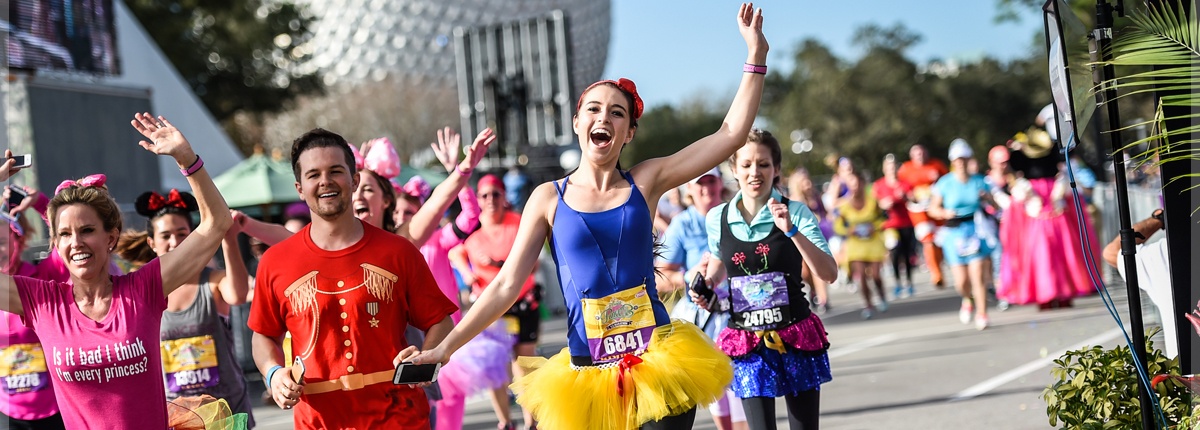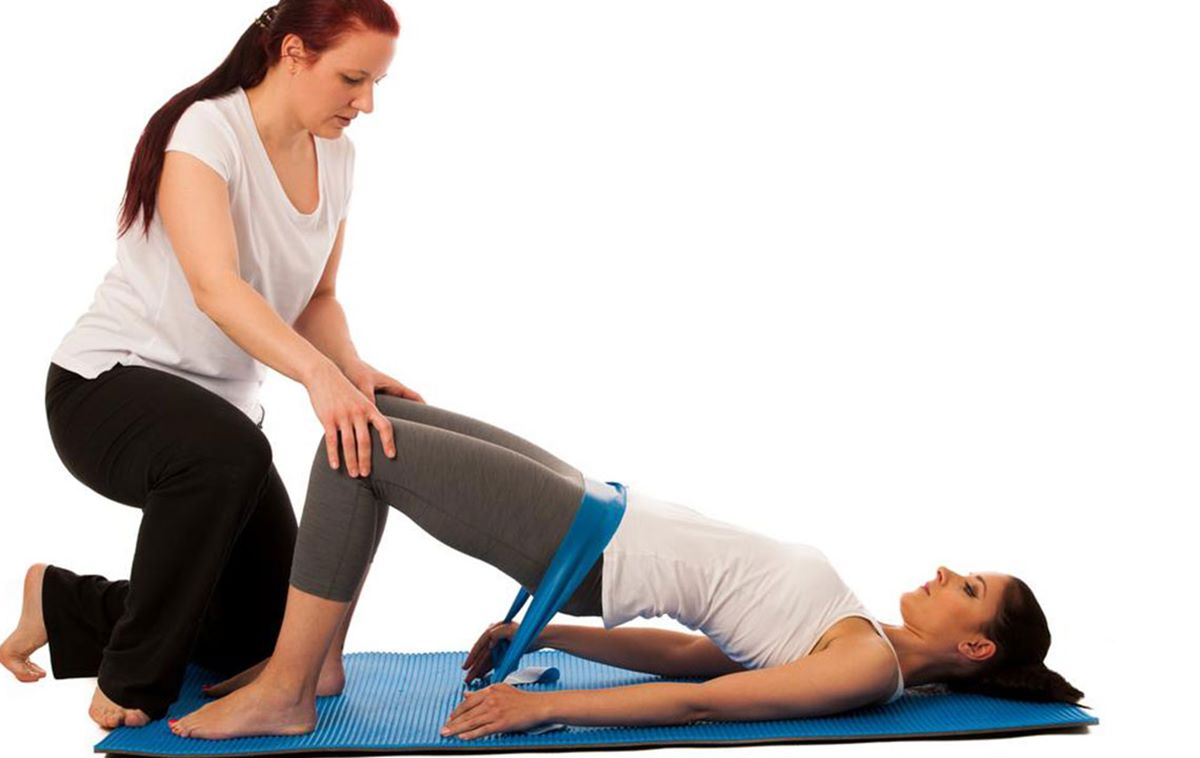Home>Misc>Featured>How Long After Giving Birth Can You Exercise


Featured
How Long After Giving Birth Can You Exercise
Published: September 26, 2023
"Discover when it's safe to start exercising post-pregnancy and the recommended timeline for new moms. Read our featured article for all the info you need."
Introduction
Congratulations on your journey into motherhood! The postpartum period is a time of immense joy and adjustment, as you navigate the challenges and rewards of caring for a newborn. As a new mom, you may be wondering when it’s safe to resume exercise after giving birth.
Returning to physical activity postpartum is an essential part of your overall recovery and well-being. However, it’s crucial to approach postpartum exercise with caution and in consultation with your healthcare provider. The recovery process varies for each woman, depending on factors such as the type of delivery, any complications experienced, and individual healing time.
In this article, we will discuss the factors to consider before starting postpartum exercise, general guidelines to follow, and exercises to avoid. We will also provide tips for safe and effective postpartum exercising, as well as signs that indicate you should stop exercising and consult with your healthcare provider.
Remember that this article serves as a general guide, and it’s essential to consult with a healthcare professional before starting any exercise program after giving birth. Their expertise can help tailor an exercise plan specifically to your needs, ensuring a safe and effective recovery.
Factors to Consider Before Starting Postpartum Exercise
Prior to beginning any postpartum exercise program, there are several important factors to consider. These factors will help guide and inform your decision-making process, ensuring that you engage in safe and appropriate physical activity during your recovery. Here are some key considerations:
- Medical clearance: Your healthcare provider is the best person to assess your postpartum condition and determine when you are ready to start exercising. It’s crucial to receive medical clearance before beginning any exercise program after giving birth. This ensures that any potential complications or risks are addressed, and you can exercise safely.
- Delivery type: The type of delivery you had – vaginal or cesarean section – can impact the trajectory of your postpartum recovery. Vaginal deliveries typically have shorter recovery periods, while cesarean deliveries require extra care to allow the incision to heal. Your healthcare provider can provide specific guidance based on your delivery method.
- Complications or interventions: If you experienced any complications during pregnancy or delivery, such as gestational diabetes or high blood pressure, or required interventions like forceps or vacuum-assisted delivery, it’s important to factor in these considerations when starting postpartum exercise. Your healthcare provider can assess any potential implications and provide appropriate guidance.
- Postpartum healing: Your body needs time to heal and recover after giving birth. This includes the healing of any tears or episiotomies, as well as the restoration of your pelvic floor muscles. It’s vital to give your body the time it needs to heal properly before embarking on any strenuous exercise program.
- Energy and sleep levels: The demands of caring for a newborn can leave new moms feeling exhausted and sleep-deprived. Prioritize self-care and ensure you have enough energy and adequate sleep before engaging in any postpartum exercise. Pushing yourself too hard without enough rest can impact your recovery and overall well-being.
By considering these factors, you can make informed decisions about when to start postpartum exercise and what types of activities are appropriate for your individual circumstances. Remember, everyone’s postpartum journey is unique, and it’s important to be patient with yourself and listen to your body throughout the process.
General Guidelines for Postpartum Exercise
When it comes to postpartum exercise, it’s crucial to prioritize caution and gradually ease back into physical activity. Your body has undergone significant changes during pregnancy and childbirth, and it needs time to heal and regain strength. Here are some general guidelines to follow:
- Start slowly: Begin with gentle exercises that focus on rebuilding your core strength and pelvic floor. This can include kegel exercises, gentle yoga or Pilates, and low-impact cardio activities such as walking or swimming. Gradually increase the intensity and duration of your workouts as your body adjusts.
- Listen to your body: Pay attention to how you feel during and after exercise. If you experience any pain, dizziness, or excessive fatigue, it’s essential to stop and rest. Pushing yourself too hard can put unnecessary stress on your body and hinder your recovery. Respect your body’s signals and adjust your exercise routine accordingly.
- Engage your core: Focus on strengthening your core muscles, which may have weakened during pregnancy. Performing exercises such as pelvic tilts, bridges, and modified planks can help regain abdominal strength and stability. Avoid traditional sit-ups or crunches, as they can strain the abdominal muscles.
- Include pelvic floor exercises: The pelvic floor muscles play a vital role in supporting your organs and maintaining bladder control. Performing kegel exercises regularly can help restore the strength and function of these muscles. Consult a healthcare provider or a physical therapist for guidance on proper technique and progression.
- Stay hydrated: Drink plenty of water before, during, and after exercise to stay hydrated. Breastfeeding mothers may require even more fluids to maintain adequate milk supply.
- Wear supportive clothing: Invest in comfortable and supportive clothing, including a well-fitted sports bra, to provide proper support for your breasts. Consider wearing a postpartum support belt or belly wrap to provide additional stability and support to your core.
- Take breaks and modify as needed: If you feel tired or overwhelmed, take breaks during your workout or modify exercises to suit your comfort level. It’s better to prioritize safety and listen to your body’s needs rather than push yourself beyond your limits.
Following these general guidelines will help you gradually rebuild your strength and stamina while minimizing the risk of injury or setbacks in your postpartum recovery. Remember, every woman’s journey is unique, so it’s essential to seek guidance from your healthcare provider and listen to your body’s cues throughout the process.
Exercise Timeline After Giving Birth
After giving birth, it’s important to allow your body time to heal before engaging in any strenuous exercise. The timeline for returning to physical activity can vary depending on factors such as the type of delivery and individual recovery. Here is a general timeline to consider:
- First few days: Immediately after giving birth, your body needs to focus on healing and rest. During the first few days, prioritize resting, bonding with your baby, and recovering from the birthing process. Light walking or gentle stretching may be appropriate, under the guidance of your healthcare provider.
- First six weeks: This initial period after giving birth is often referred to as the “postpartum period.” During these six weeks, focus on gentle exercises that promote healing and recovery. This can include pelvic floor exercises, gentle stretching, and low-impact activities like walking or postnatal yoga. Listen to your body and gradually increase your activity level as you feel ready.
- Six to eight weeks: Around six to eight weeks postpartum, most women receive medical clearance from their healthcare provider to gradually intensify their exercise routine. Begin incorporating more moderate activities, such as swimming, cycling, or strength training with light weights. Be sure to monitor your body’s response and increase intensity slowly.
- Three to six months: As you approach the three to six-month mark postpartum, you can start to incorporate higher-intensity workouts into your routine. This can include activities like jogging, high-impact aerobics, or interval training. However, it’s still important to listen to your body and not push beyond what feels comfortable or causes pain or discomfort.
- After six months: By six months postpartum, many women have fully recovered and can participate in a wide range of exercises without restrictions. Consult with your healthcare provider for guidance on specific activities and listen to your body as you continue to progress in your postpartum fitness journey.
Remember that this timeline is a general guide, and individual recovery times may vary. Always consult with your healthcare provider for personalized guidance regarding when to start exercising and how to progress safely. It’s important to be patient with yourself and give your body the time it needs to heal and regain strength.
Exercises to Avoid After Giving Birth
While postpartum exercise is essential for recovery and overall well-being, there are certain exercises that should be avoided during the early stages of your postpartum journey. These exercises may put excessive strain on your healing body and potentially cause injury or complications. Here are some exercises to avoid:
- High-impact activities: Avoid high-impact exercises such as running, jumping, or vigorous aerobic workouts during the initial postpartum period. These activities can put pressure on your pelvic floor and abdominal muscles, potentially leading to discomfort or pelvic floor dysfunction.
- Heavy weightlifting: Steer clear of heavy weightlifting or intense resistance training in the initial weeks and months after giving birth. Your body needs time to regain strength and stabilize. Gradually introduce weights as you feel stronger and receive clearance from your healthcare provider.
- Traditional abdominal exercises: Avoid traditional abdominal exercises like sit-ups, crunches, or planks that place excessive strain on the abdominal muscles. These exercises can interfere with the healing of your abdominal muscles and potentially worsen diastasis recti (abdominal separation).
- Deep twists or backbends: Avoid deep twisting movements or extreme backbends, as they can strain the connective tissues and ligaments that may still be recovering. Opt for gentle stretches that focus on improving mobility and flexibility without compromising stability.
- Heavy impact on joints: Activities that put significant pressure on your joints, such as high-intensity interval training (HIIT) or step aerobics, should be avoided until your body has had ample time to heal and strengthen. Listen to your body and opt for low-impact alternatives like elliptical training or swimming.
- Holding your breath: Avoid exercises that involve breath-holding or excessive straining, such as some forms of weightlifting or powerlifting. This can elevate your blood pressure and strain your pelvic floor, which may still be recovering from pregnancy and childbirth.
Remember, every woman’s postpartum recovery is unique, so it’s important to consult with your healthcare provider for personalized guidance on exercises to avoid and appropriate modifications. Gradually reintroducing these exercises as your body heals and becomes stronger will help minimize the risk of complications and ensure a safe and effective exercise routine.
Tips for Safe and Effective Postpartum Exercising
When engaging in postpartum exercise, keeping safety and effectiveness in mind is crucial. By following these tips, you can ensure a safe and productive postpartum fitness routine:
- Consult with your healthcare provider: Before starting any exercise program after giving birth, consult with your healthcare provider to ensure you are medically cleared for physical activity. They can provide guidance and recommendations tailored to your specific needs and recovery progress.
- Start slowly and gradually: Ease back into exercise by starting with gentle activities like walking, yoga, or swimming. Allow your body time to recover and adjust to the demands of physical activity. Gradually increase the intensity and duration of your workouts as you regain strength and endurance.
- Engage in core and pelvic floor exercises: Focus on strengthening your core and pelvic floor muscles, which may have weakened during pregnancy and childbirth. Incorporate exercises such as kegels and gentle core strengthening movements to restore strength and stability to these areas.
- Practice good posture: Maintain proper alignment and posture during exercise to prevent unnecessary strain on your muscles and joints. Pay attention to your body’s positioning and seek guidance from a qualified professional if needed.
- Stay hydrated: Drink plenty of water before, during, and after exercise to stay hydrated. Proper hydration is crucial for postpartum recovery, especially if you are breastfeeding.
- Listen to your body: Pay attention to how your body feels during and after exercise. If you experience any pain, dizziness, excessive fatigue, or other unusual symptoms, stop exercising and consult with your healthcare provider. Your body will give you signals when it needs rest or modifications in your routine.
- Get adequate rest: Rest is essential for postpartum recovery. Prioritize sleep, and listen to your body when it needs rest during the day. Pushing yourself too hard without enough rest may hinder your progress and overall well-being.
- Find support and accountability: Consider joining postnatal exercise classes or connect with other new moms who are also on their postpartum fitness journey. Having support and accountability can help you stay motivated and make the process more enjoyable.
- Be patient and kind to yourself: Remember that everyone’s postpartum journey is unique, and it takes time for your body to recover fully. Be patient with yourself, celebrate small achievements, and practice self-compassion throughout the process.
By incorporating these tips into your postpartum exercise routine, you can ensure a safe and effective recovery while gradually regaining your strength and fitness. Remember to listen to your body, seek professional guidance when needed, and always prioritize your overall well-being.
Listening to Your Body: Signs to Stop Exercising
While exercise is beneficial for postpartum recovery, it’s crucial to listen to your body and recognize when it’s time to stop or modify your workout. Ignoring warning signs can lead to injury or setbacks in your recovery. Here are some signs to watch for that indicate it’s time to stop exercising:
- Pain: If you experience any sharp or intense pain during exercise, it’s important to stop and assess the cause. Pain can be a sign of injury or overexertion and should not be ignored. Consult with your healthcare provider if pain persists or worsens.
- Dizziness or lightheadedness: Feeling dizzy or lightheaded during exercise may indicate that you are pushing yourself too hard or not getting enough rest. Stop exercising, rest, and hydrate. If symptoms persist, seek medical attention.
- Excessive fatigue: Feeling overly fatigued or exhausted during or after exercise may indicate that you are pushing beyond your current energy levels. Fatigue is a sign that your body needs rest. Take breaks, modify your routine, or reduce the intensity as needed.
- Shortness of breath: It’s normal to experience an increased heart rate and breathing during exercise. However, if you find it difficult to catch your breath or become excessively short of breath, it’s essential to stop and evaluate your exertion level. This can be a sign of overexertion or an underlying health issue.
- Pressure or discomfort in the pelvic area: If you feel increased pressure, heaviness, or discomfort in your pelvic area during or after exercise, it may indicate that you are putting too much strain on your pelvic floor muscles. This can be a sign to modify or stop exercises that exacerbate these symptoms.
- Leaking urine: Incontinence during exercise, such as leaking urine, can be a sign of a weakened pelvic floor. It’s important to address this issue and modify your exercises as needed to prevent further strain on the pelvic floor. Consult with a healthcare provider or a pelvic floor specialist for guidance.
- Mental or emotional stress: Exercise should be a form of self-care and stress relief. If you find that exercise is causing excessive mental or emotional stress, it’s important to reassess your routine and consider alternative activities that bring you joy and relaxation.
Remember, every woman’s postpartum journey is unique, and your body will have different limits and signals. It’s important to listen to your body, trust your instincts, and make adjustments or seek medical guidance when needed. Prioritizing your well-being and safety throughout your postpartum exercise routine is paramount to a successful and healthy recovery.
Conclusion
The postpartum period is a transformative and beautiful time in a woman’s life, and incorporating safe and effective exercise into your recovery journey is a vital component of your overall well-being. By considering the factors discussed, such as medical clearance, delivery type, and postpartum healing, you can make informed decisions about when to begin exercising.
Remember to start slowly and gradually increase the intensity and duration of your workouts, listening to your body’s cues along the way. Focus on exercises that target your core and pelvic floor while maintaining good posture and proper form. Additionally, staying hydrated, getting adequate rest, and seeking support from healthcare professionals and other new moms can enhance your postpartum exercise experience.
Be mindful of exercises to avoid during the early stages of your recovery, such as high-impact activities, heavy weightlifting, and exercises that put excessive strain on your abdominal muscles or joints. Respect your body’s limits and choose activities that promote healing and strength without causing pain or discomfort.
Lastly, listen to your body throughout your exercise routine and be aware of signs to stop, such as pain, dizziness, excessive fatigue, and discomfort. Your body’s needs and capabilities will evolve over time, so it’s important to continuously assess and modify your exercise routine accordingly.
Remember, every postpartum journey is unique, and it’s crucial to consult with your healthcare provider for personalized guidance. By prioritizing safety, being patient with yourself, and gradually increasing your activity level, you can embark on a successful postpartum exercise journey that supports your physical and emotional well-being.









